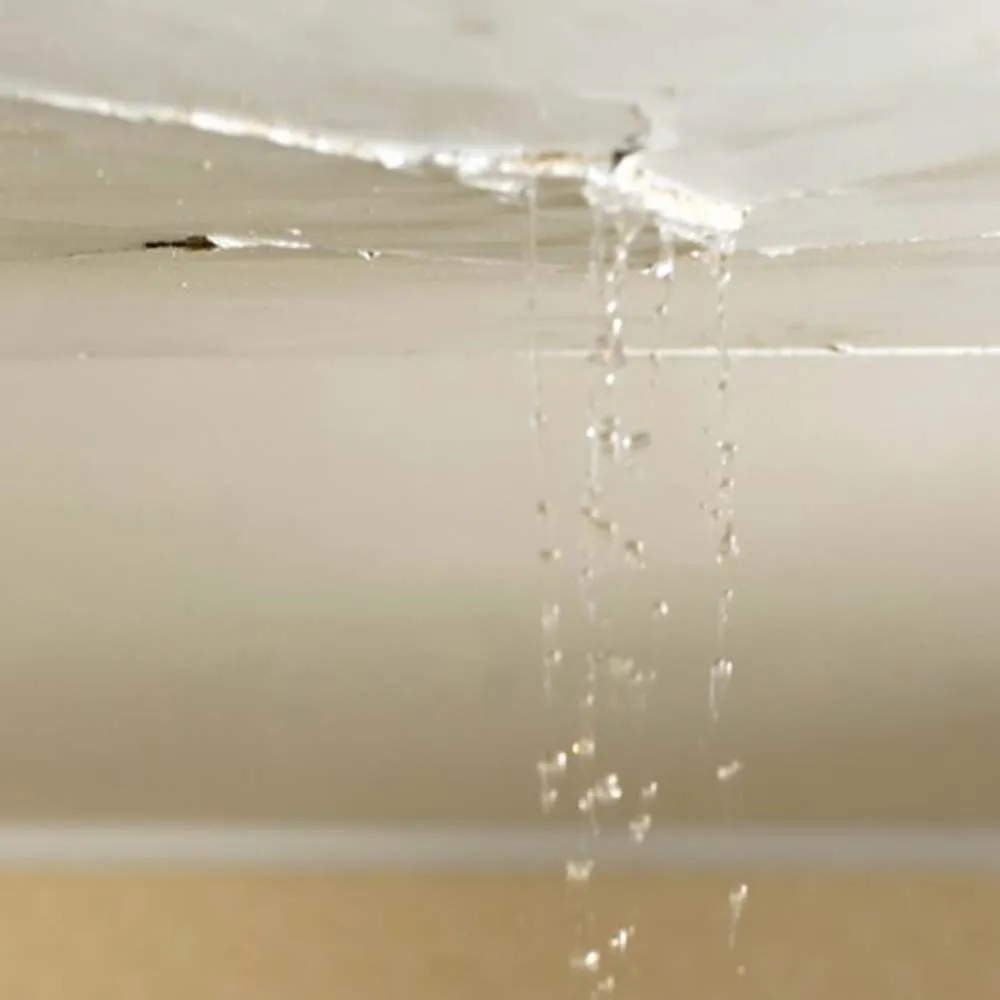Neighbourhood and Building Management
- FAQs
Disputes between owners or between an owner and the Owners’ Corporation (OC) can be resolved through a mix of internal resolution mechanisms and formal legal processes under Hong Kong law.
1. Internal Resolution
- Owners’ Meetings – Raise the dispute at a general meeting of owners or the OC.
- Mediation – Voluntary process facilitated by a neutral mediator; often faster and less costly.
- Negotiation – Direct discussion between parties, possibly with the OC’s manager acting as facilitator.
2. Legal Framework
Under the Building Management Ordinance (Cap. 344):
- Section 18 – OCs have power to manage common parts and enforce the Deed of Mutual Covenant (DMC).
- Section 28 – Allows the OC to recover unpaid management fees via the Small Claims Tribunal (if ≤ HK$75,000) or District Court.
- Section 33 – Owners may apply to the Lands Tribunal for orders to settle disputes relating to management, control, or use of common parts.
- Section 45 – Criminal penalties for offences under the Ordinance (e.g., obstruction of OC duties).
3. Lands Tribunal
Specialised court for building management disputes which can:
- Interpret and enforce the DMC.
- Order compliance or cessation of breaches.
- Determine apportionment of management expenses.
4. Mediation Before Tribunal
The Lands Tribunal often encourages mediation before proceeding to a full hearing.
Mediated settlements can be recorded as consent orders.
5. Court Proceedings
If the dispute involves complex contractual or tort claims beyond the Lands Tribunal’s scope, parties may sue in the District Court or High Court.
Appeals from the Lands Tribunal go to the Court of Appeal under the Lands Tribunal Ordinance (Cap. 17).
If unauthorized building works (UBWs) are found in your building, the Buildings Department (BD) has wide enforcement powers under the Buildings Ordinance (Cap. 123).
1. Definition of UBWs
- UBWs are any additions, alterations, or building works carried out:
- Without prior BD approval; or
- Not following the Minor Works Control System procedures.
- Examples:
- Rooftop structures.
- Canopies or balconies.
- Subdivision of flats.
- Alterations to structural walls.
- Supporting frames for air-conditioners.
2. BD Enforcement Action
- Statutory Order – BD will issue a removal order to the owners concerned requiring demolition of the UBWs.
- Registration – The order is registered in the Land Registry against the property title.
- Prosecution – If you fail to comply:
- Criminal offence.
- Maximum penalty: 1 year’s imprisonment and HK$200,000 fine.
- Further daily fine: HK$20,000 until compliance.
3. No Legitimate Expectation to Keep UBWs
- BD’s policy is enforcement, not tolerance.
- Even if UBWs have existed for many years without action, BD can still order removal.
- Owners have no legal right to retain UBWs.
4. Owners’ Responsibilities
Owners must ensure their premises are free from UBWs.
- If UBWs are in common parts, the Owners’ Corporation (OC) is responsible for removal.
- Removal should be carried out by a Registered General Building Contractor or Registered Minor Works Contractor under BD supervision.
Yes — a Deed of Mutual Covenant (DMC) can lawfully impose restrictions on keeping pets and making alterations to your flat, provided these covenants are validly drafted and registered.
1. Pets
- Many DMCs contain user restrictions or negative covenants prohibiting owners/occupiers from:
- Keeping animals that cause nuisance, noise, or hygiene problems.
- Keeping any pets at all (absolute prohibition).
- If the DMC contains such a clause, all owners and occupiers are contractually bound by it.
- The Owners’ Corporation (OC) or building manager can enforce these covenants under the Building Management Ordinance (Cap. 344).
- If the DMC is silent, you may still be liable under common law nuisance if your pet disturbs neighbours.
2. Alterations
- DMCs often prohibit structural alterations or changes to the external appearance without prior written consent from the OC or manager.
- Structural alteration means works affecting the building’s form or framework, such as:
- Removing load-bearing walls.
- Opening up external walls.
- Under Landlord and Tenant (Consolidation) Ordinance (Cap. 7), s.117(3) for domestic tenancies after 27 Dec 2002:
“The tenant will not make any structural alterations without the written consent of the landlord.”
- Building Ordinance (Cap. 123) also requires government approval for structural works.
- Even non-structural changes may be restricted if they affect common parts or breach external appearance covenants.
3. Enforcement
- Breach of a DMC covenant can lead to:
- OC or manager issuing warning notices.
- Legal action in the Lands Tribunal for injunctions or damages.
Management fees for a multi-unit building are generally determined by the Deed of Mutual Covenant (DMC) and the Building Management Ordinance (Cap. 344).
1. Basis of Calculation
- Budget Preparation – The building manager or Owners’ Corporation (OC) prepares an annual budget covering:
- Maintenance and repair of common parts.
- Cleaning, security, insurance, utilities for common areas.
- Administrative expenses.
- Total Annual Cost is then apportioned among owners according to the DMC.
2. Apportionment Rules
- Undivided Shares – Most DMCs allocate management fees based on the number of undivided shares each unit holds in the building.
- Larger flats or units with higher shares pay proportionally more.
- Separate Facilities – Some DMCs distinguish between:
- Residential Common Areas/Facilities (RCA/RCF)
- Commercial Common Areas/Facilities (CCA/CCF)
- Carpark Common Areas/Facilities (CPCA/CPCF)
- Estate Common Areas/Facilities (ECA/ECF)
Owners pay only for the facilities they benefit from.
- Special Apportionment – Case law (e.g., Hong Kong Housing Society v The Incorporated Owners of Heya Star [2023] HKCFI 2142) confirms that:
- Costs for services or facilities used exclusively by certain owners should be borne solely by them.
- Costs for inseparable systems (e.g., fire services installations serving all areas) are shared by all.
3. Adjustments and Surpluses
- Some DMCs require separate accounts for different categories of owners (e.g., ground floor vs upper floors).
- Surpluses may be carried forward to reduce future fees, but this depends on the wording of the DMC.
4. Disputes
If owners believe fees are miscalculated or misapportioned:
- Raise the issue at an OC meeting.
- Seek to amend the budget.
- Apply to the Lands Tribunal for determination.
If a building manager fails to perform their duties in Hong Kong, the Building Management Ordinance (Cap. 344) and the Deed of Mutual Covenant (DMC) provide several options for owners or the Owners’ Corporation (OC).
1. Review the DMC and Ordinance
- The DMC will set out the manager’s contractual duties (e.g., repair and maintenance of common parts, cleanliness, security).
- Under Cap. 344, once an OC is formed, it has statutory powers to monitor the building manager’s performance and budget.
2. Raise the Issue at an Owners’ Meeting
If an OC exists:
- Call a general meeting to discuss the manager’s performance.
- Pass a resolution to issue a warning or require remedial action.
If no OC exists:
- Owners can convene a meeting according to the DMC procedures.
3. Terminate or Replace the Manager
The OC can terminate the appointment of the manager if authorised by the DMC and supported by the required percentage of owners’ shares.
A replacement manager can be appointed by resolution.
4. Legal Remedies
If the manager’s failure causes loss or damage, the OC or individual owners may sue for breach of contract.
In serious cases (e.g., safety risks), owners can apply to the Lands Tribunal for orders compelling the manager to perform their duties.
5. Government Assistance
If there is no OC and the lack of management poses a danger to owners or occupiers, owners can:
- Apply to the Secretary for Home and Youth Affairs to order a meeting to appoint a management committee (Cap. 344, ss. 3A, 4, 40C).
- Once the OC is formed, it can take control from the ineffective manager.
In Hong Kong, the formation of an OC is governed by the Building Management Ordinance (Cap. 344). There are three main stages:
Stage 1 – Appointing a Management Committee
There are four possible routes:
Stage 2 – Registration
The management committee must apply to the Land Registry within 28 days of appointment to register the OC.
Stage 3 – Formation
The OC is formed when the Land Registrar issues a certificate of registration.
Powers of an Owners’ Corporation
Once formed, an OC has statutory powers under Cap. 344 and the DMC:
1. Building Management
- Manage, maintain, and repair common parts.
- Arrange cleaning, security, and safety measures.
2. Financial Control
- Approve budgets and collect management fees.
- Monitor and audit the building manager’s accounts.
- Terminate the appointment of the building manager.
3. Decision-Making
- Pass resolutions at general meetings.
- Represent all owners in legal proceedings related to the building.
4. Enforcement
- Enforce DMC covenants against owners/occupiers.
- Take action to prevent unauthorised use or alteration of common parts.
Your rights against a neighbour causing nuisance or disturbance in Hong Kong depend on your capacity (tenant or owner) and the legal basis of your claim.
1. Rights under the Deed of Mutual Covenant (DMC)
- The DMC usually contains negative covenants prohibiting owners and occupiers from causing nuisance or disturbance.
- If you are an owner: You can enforce the DMC against other owners and occupiers through civil proceedings (e.g., seeking an injunction or damages).
- If you are a tenant: You can also enforce relevant covenants in the DMC against other owners or tenants.
2. Rights under Statute
- For domestic tenancies entered on or after 27 December 2002, section 117(3) of the Landlord and Tenant (Consolidation) Ordinance (Cap. 7) implies a covenant that the tenant will not cause unnecessary annoyance or disturbance to neighbours.
- If breached, the landlord may forfeit the tenancy.
- If you are a tenant suffering nuisance, you may:
- Ask your landlord to take enforcement action.
- Directly sue the neighbour in the Lands Tribunal or District Court.
3. Rights under Common Law (Tort of Private Nuisance)
You can sue for private nuisance if the neighbour’s conduct substantially interferes with your enjoyment of your property.
The court will balance:
- Your right to quiet enjoyment.
- The neighbour’s right to use their property lawfully.
Factors considered: duration, frequency, intensity of the interference, and whether it is reasonable in the circumstances.
Generally, no — unless the lease, occupation permit, and DMC allow commercial use, and you have obtained all required approvals. You should check all relevant documents before changing the use.
Whether you can use a residential unit for commercial purposes in Hong Kong depends on three main factors:
1. Tenancy Agreement or Title Documents
- If you are a tenant, most tenancy agreements clearly state that the premises are for domestic use only.
- Using it for business (e.g., a shop or office) would be a breach of contract, giving the landlord a right to terminate the tenancy and claim damages.
- If you are an owner, check the Government Lease, Occupation Permit, and Deed of Mutual Covenant (DMC) for any user restrictions.
2. Government Lease Restrictions
- All land in Hong Kong is held under a Government Lease which specifies permitted uses. If the lease states “residential use only”, conducting business may breach the lease.
- Breach can trigger the Government’s right of re-entry and repossession under the Government Rights (Re-entry and Vesting Remedies) Ordinance (Cap. 126).
3. Building Management Rules (DMC)
The DMC often requires that units be used only for authorised purposes under the Government Lease and Occupation Permit.
Breach may lead to legal action by the Owners’ Corporation or other owners.
In Hong Kong, “common parts” in a multi-storey building are areas and facilities that are shared by all co-owners and not designated for the exclusive use of any single owner, unless otherwise specified in a registered instrument such as a Deed of Mutual Covenant (DMC).
Legal Definition:
Under section 2 of the Building Management Ordinance (Cap. 344):
“common parts” (公共地方) means—
(a) the whole of the building except such parts as have been specified or designated in a Government lease or in an instrument registered in the Land Registry as being for the exclusive use, occupation or enjoyment of an owner; and
(b) the parts specified in Schedule 1, which include external walls, roofs, corridors, staircases, lobbies, lifts, lift shafts, and other structural parts.
Examples:
- Structural elements: external walls, roofs, foundations.
- Access areas: lobbies, corridors, staircases, lift lobbies.
- Shared facilities: lifts, water tanks, fire service installations.
- Open areas: gardens, playgrounds, car parks (if not exclusively assigned).
A Deed of Mutual Covenant (DMC) is a legal document that sets out the rights, obligations, and restrictions of all owners in a multi-unit building.
It is signed between the developer and the first purchaser, and becomes binding on all subsequent owners once registered in the Land Registry.
Key Features:
- Defines common parts such as lobbies, corridors, external walls, and other shared facilities.
- Sets user restrictions (e.g., residential flats cannot be used for commercial activities).
- Regulates building management: how management fees are calculated, how repairs are approved, and how an Owners’ Corporation is formed.
- Contains covenants binding all owners to maintain harmony and proper use of the building.
Importance:
- Ensures orderly management: By clearly defining rights and duties, disputes over use of common parts or alterations can be resolved with reference to the DMC.
- Protects property value: Restrictions on use and alterations help maintain the building’s appearance and structural integrity.
- Legal enforceability: Owners and the Owners’ Corporation can enforce the DMC through the Building Management Ordinance (Cap. 344) and, if necessary, court proceedings.
- Prevents abuse of rights: Owners cannot unilaterally change common parts or breach restrictions without proper approval.







